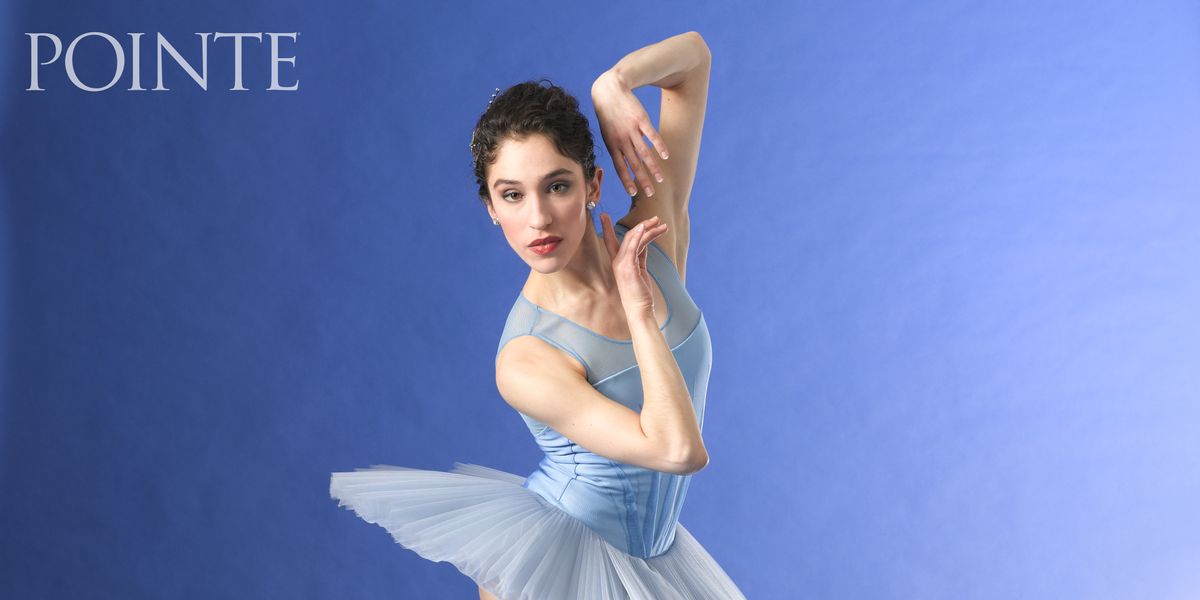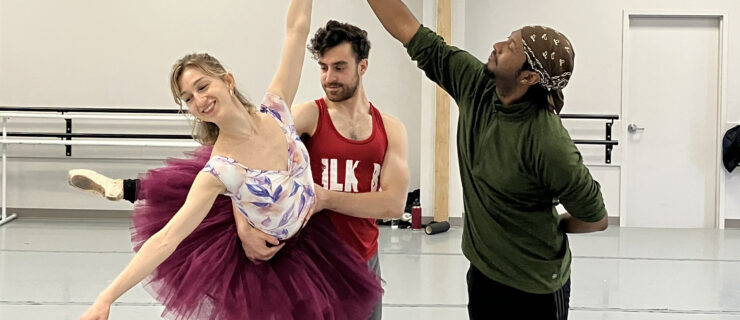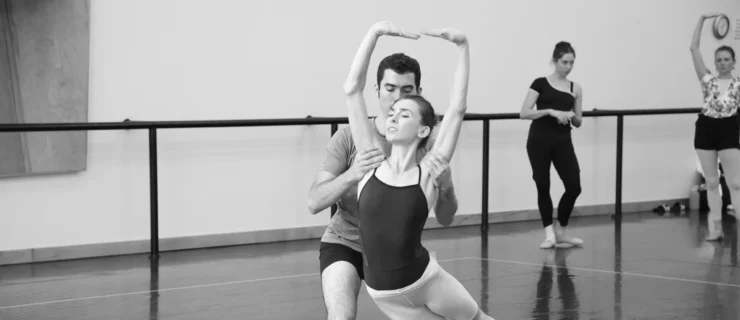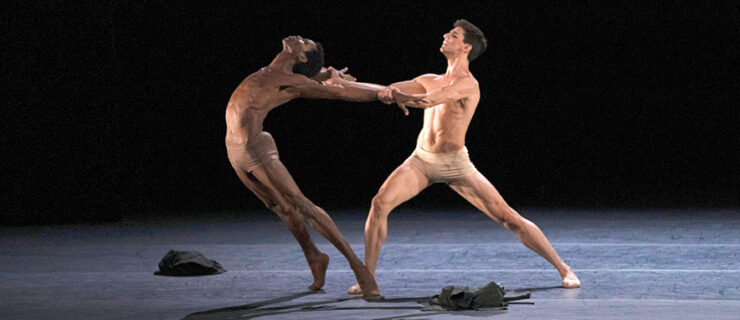Leta Biasucci: Breaking the Mold at Pacific Northwest Ballet
This is Pointe’s October/November 2014 Cover Story.
In a company known for its tall women, Pacific Northwest Ballet’s Leta Biasucci doesn’t fit the mold. At 5′ 3″, she seems petite next to several of the company’s willowy principals. But her height is far from all that stands out.
Last spring she charmed audiences in Giselle‘s peasant pas de deux, flying through impeccable batterie with grace and precision. The role seemed made for her, but so does nearly every one that she’s danced, a tribute to the broad spectrum of her talent. She’s stepped in last minute as Swanilda in Coppélia. She’s conquered Clara in PNB’s Nutcracker. She’s been featured in work by Christopher Wheeldon and Twyla Tharp. And last winter, shortly after her 24th birthday, she made her debut as Aurora in The Sleeping Beauty. “It’s odd to see someone fit so naturally in a full-length ballerina role,” says PNB artistic director Peter Boal. “That’s the hardest thing to do, and she got there first.” Biasucci has been a star in PNB’s corps de ballet for only three years. This fall marks her promotion to soloist, and she is well on her way to expanding the definition of a PNB ballerina.
Even her background is different. Unlike most PNB corps dancers, Biasucci did not come through the company’s professional division or the School of American Ballet, where Boal keeps close ties. A Pennsylvania native, Biasucci began dancing as a 5-year-old in a ballet-tap combo class. After three years, her teacher suggested she might like the more rigorous training at Marcia Dale Weary’s Central Pennsylvania Youth Ballet, noted for turning out technically strong, versatile performers. Her years there laid the foundation for her entire career. At 16, she became a trainee at San Francisco Ballet School. At 18, she landed her first professional job with Oregon Ballet Theatre under Christopher Stowell. OBT’s small size, she says, gave her “a good place to grow, feel nurtured and have opportunities to be presented,” but she was hesitant to let her roots grow deep. “I had dreams of dancing in a larger company,” she says.
Biasucci took PNB’s company class in spring 2011 without any real expectation of a job. For one thing, she was comparatively short. Early on, she says, “I’d come to terms with the fact that my height would always be a deciding factor in jobs offered, roles danced and heads turned.” Petite felt especially prohibitive at PNB. “In my mind it was always women that are 5′ 10″ with these incredible lines.” Boal, however, was intrigued by her. “There was something so unique about her style—which is good and bad,” he says. “We see about a hundred dancers a year that come through and take company class, and very few of them stick with you.” Biasucci stuck, and Boal offered her a contract.
 Biasucci with PNB soloist Kiyon Gaines in Twyla Tharp’s “Brief Fling.” Photo by Angela Sterling, Courtesy PNB.
Biasucci with PNB soloist Kiyon Gaines in Twyla Tharp’s “Brief Fling.” Photo by Angela Sterling, Courtesy PNB.
She soon proved herself. At the end of her first season, another dancer’s injury gave her an opportunity to dance Swanilda. Last on the cast list, but with a physique and personality perfect for the role, Biasucci had been tapped as an understudy. However, Boal notes, “careers are always made on what happens last minute.” He felt pleased by her success. “It made you look at Leta and think, Okay, we’re not just talking about a future soloist. We’re talking about a talent that’s going to ascend into all of the big roles.”
Last season’s Aurora was a dream role for Biasucci, one she found both rewarding and grueling. “The characterization is conveyed so much through clarity in the technique,” she says, and each act requires a very different approach. Biasucci felt at home in Act I’s rapid-fire petit allégro entrance, but the ballet’s demanding adagios challenged her natural inclinations, especially in the ethereal second act. She notes drily that “other ballerinas talked about how Act II was supposed to be the ‘rest act,’ but I had to expend so much energy on not punching everything.”
Contemporary choreography, integral to PNB’s repertory, has been the final frontier for Biasucci, with her classical CPYB background. “At first it was scary for me,” she admits. At PNB, big names like Twyla Tharp and Crystal Pite setting their work on the company has deepened her understanding and experience. Biasucci has also worked closely with choreographer and former PNB dancer Andrew Bartee, whom she considers a source of inspiration. The respect is mutual—Bartee loves teasing new movement qualities out of Biasucci. “It’s like her skin breathes when she moves,” he says. “I’ve told her before, I wish I could be in her body for a day, because everything looks like it feels good, even if the movement’s awkward.”
“She’s very gutsy in what she’ll attempt to do,” says Boal. “I actually love when she’s unsuccessful, because she has these amazingly creative ways of still finishing a combination when she’s clearly falling to the right.” Biasucci’s willingness to try anything extends beyond the studio. By night, she takes college courses in arts management through PNB’s Second Stage program. “The dance career requires that you are worried about yourself,” she says. “To learn about how the organization operates has allowed me to see the arts as a much bigger, broader entity.”
 Biasucci in “Sleeping Beauty.” Photo by Angela Sterling, Courtesy PNB.
Biasucci in “Sleeping Beauty.” Photo by Angela Sterling, Courtesy PNB.
Biasucci is poised to shift the long-established image of the PNB ballerina. But a company standard arises from exceptional dancers who win the audience over to the qualities that set them apart. “There was probably a time when Patricia Barker went into roles, and people thought she was longer and lankier than what a ballerina should be,” says Boal. “Then Kaori Nakamura went into a role, and they thought, She’s so tiny, we picture someone more like Patricia Barker. But Leta is pushing the model in a new direction, and people have really come to embrace her as a talent.” It’s anyone’s guess where Biasucci’s talents will lead her next, as Boal is first to recognize. “That’s what is so exciting about Leta. She’s going to go in 10 directions. Ten great upwardly-mobile directions.”





